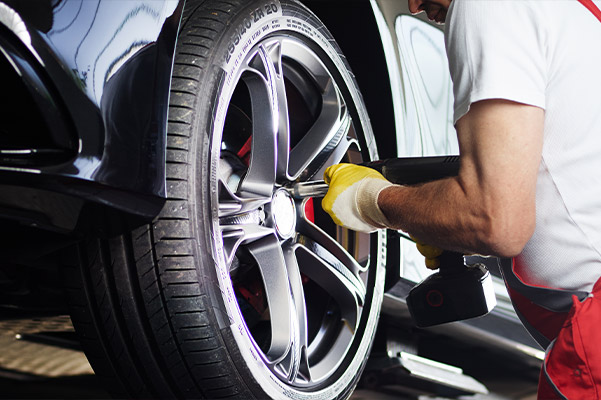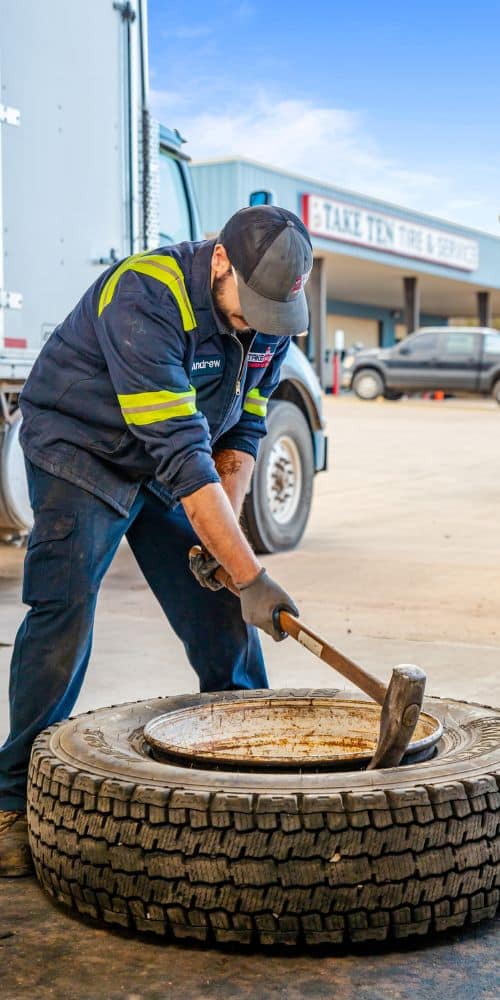Tire Service: The Effect of Climate Condition
When it pertains to making certain ideal efficiency and security when driving, recognizing the impact of weather on tire service is essential. From scorching warmth to icy roads, each weather component can significantly influence tire functionality and general driving experience. By diving right into the impacts of differing weather on tires, motorists can obtain important insights that might boost their car's efficiency and longevity. In this discussion, we will check out the complex connection in between weather and tire solution, clarifying the significance of weather-specific tire maintenance practices and considerations.
Heat and Tire Efficiency
When revealed to heats, tires experience adjustments in efficiency that can significantly affect automobile safety and security and handling. The heat produced from prolonged driving or hot weather conditions creates the tire rubber to soften, causing decreased tread life and increased wear. As the rubber comes to be softer, the tire's hold on the road decreases, impacting braking distances and general traction. In severe situations, extreme heat can also trigger tire blowouts, posturing a serious safety danger to the vehicle and its owners.

Cold Climate Effects
Winter conditions can have a significant effect on tire efficiency and security. As temperature levels decline, tire rubber can solidify, causing decreased grip on icy or snow-covered roadways. In chilly weather condition, tires may also shed atmospheric pressure much more swiftly, which can impact dealing with and fuel effectiveness. Additionally, chilly temperatures can trigger tire sidewalls to stiffen, increasing the risk of damage from holes or other road dangers.
To alleviate the results of chilly weather condition on tires, it is vital to consistently examine tire pressure and inflate them to the manufacturer's suggested degrees. Making use of winter season or all-season tires developed for cold weather condition conditions can likewise boost traction and grasp on icy or snowy roads. Proper tire maintenance, including regular inspections for wear and damage, comes to be much more vital throughout colder months to make sure optimal efficiency and safety and security.
Rainy Conditions Influence
Tires with worn-out footsteps are more prone to hydroplaning, where a layer of water develops up in between the tire and the roadway surface, leading to loss of traction. To fight this, motorists ought to routinely check their tires for ample tread depth and take into consideration investing in tires specifically created for damp conditions.
Moreover, wet weather can additionally lower presence, making it testing for motorists to see the road in advance clearly (GMC Tire Service). In such conditions, it is vital to adjust driving speeds appropriately and keep a risk-free adhering to distance to enable unexpected quits. Appropriately filled with air tires can additionally assist in maintaining control on damp roads by giving far better handling and grip
Snow and Tire Safety
When driving in snowy conditions, having the ideal tires can make a considerable distinction in safety and performance. Wintertime tires are made with unique rubber compounds and tread patterns to provide better grip on snow and ice contrasted to all-season tires.

Additionally, vehicle drivers navigate to this site need to consider mounting this page tire chains in severe snowy conditions. Tire chains supply extra grip by gripping the snow and ice, improving stability and control. It is important to follow supplier instructions when using and setting up tire chains to avoid damages to the tires and lorry (GMC Tire Service). By choosing the right tires, keeping correct inflation, and considering extra traction help like tire chains, drivers can improve their safety when browsing snow-covered roads.
Weather-Related Tire Maintenance
Weather-related tire upkeep incorporates a range of techniques aimed at making certain ideal tire feature and long life in various weather situations. One key aspect of weather-related tire upkeep is tire stress law. Checking tire step on a regular basis and changing tires when tread wear reaches a certain deepness is important for preserving traction and security in adverse climate.
Verdict
To conclude, weather problems have a significant influence on tire efficiency and safety and security. From heat impacting tire pressure and wear to cool weather lowering grip, it is vital to take into consideration the climate when preserving and utilizing tires. Stormy problems can reduce grip and lead to hydroplaning, while snow can enhance the risk of mishaps if tires are not effectively outfitted. Weather-related tire maintenance is crucial in guaranteeing optimum efficiency and security on the roadways.
In this discussion, we will certainly explore the intricate partnership in between weather condition problems and tire solution, losing light on the significance of weather-specific tire upkeep techniques and factors to consider.
